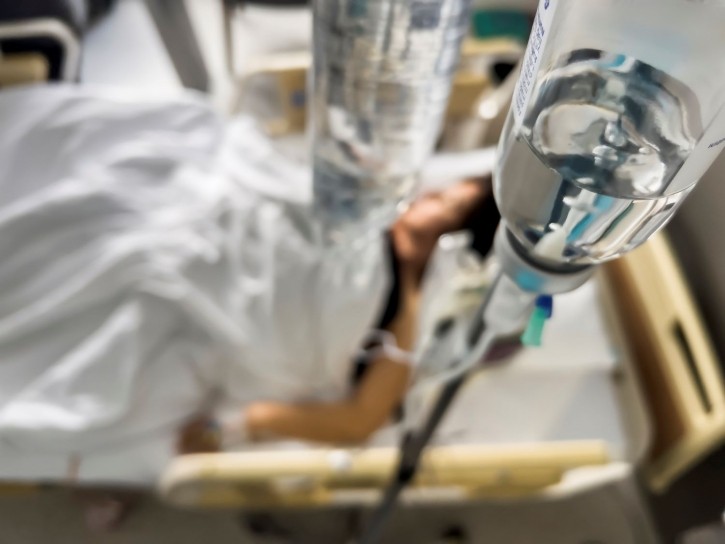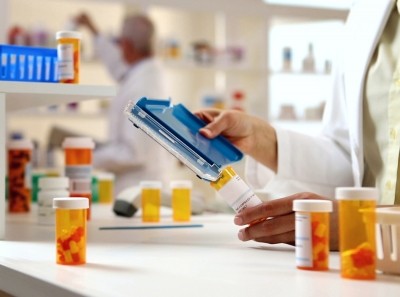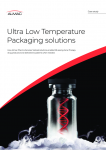Blow-fill-seal technology: Realizing a new frontier in sterile packaging

This versatile and efficient process, where plastic containers are simultaneously formed, filled and sealed in a sterile environment, has consistently proven its worth in delivering safe and reliable drug products to patients worldwide.
Nina Gabrielsen, business development director at Adragos Halden, emphasizes the importance of BFS technology: "BFS technology provides unparalleled sterility assurance and cost-effectiveness, making it ideal for a wide range of sterile liquid products, including intravenous anesthetics."
Today, BFS is increasingly being explored for various sterile liquid products, driven by its numerous advantages, including enhanced sterility assurance, cost-effectiveness, and flexibility in packaging design. Often designed with features like pre-measured doses, ergonomic shapes, and intuitive opening mechanisms, BFS containers can simplify the administration process for healthcare professionals and reduce the risk of errors. For example, Lurlok closure systems allow for easy, one-handed opening and closing.
Gabrielsen notes, "The adaptability of BFS containers, including pre-measured doses and intuitive designs, significantly reduces the risk of administration errors in healthcare settings."
The increasing reliance on BFS technology is reflected in the global BFS technology market, estimated at US$408.2 million in 2022 and projected to reach $790.3 million by 2030.
In the years to come, several current key trends can be expected to further propel BFS into the spotlight as a promising solution for the future of drug packaging:
Stricter guidelines for sterile manufacturing and packaging
Recent updates to key regulatory guidelines have heightened the emphasis on sterility assurance in pharmaceutical manufacturing. For example, updates to Annex 1, the European Union’s good manufacturing practice (GMP) guideline for sterile medicinal products, include a focus on contamination control with a new requirement for a site-wide contamination control strategy (CCS), updated microbial limits, and expanded guidance on barrier technologies like isolators and restricted access barrier systems (RABS), as well as form-fill-seal (FFS) and BFS processes.
Gabrielsen says: "With the increasing regulatory demands, BFS technology stands out by significantly reducing contamination risks, ensuring compliance with stringent sterility standards."
Encouragement of single-dose packaging formats
The rising demand for single-dose packaging formats is another catalyst for the growing adoption of BFS technology in the pharmaceutical industry. Single-dose packaging offers significant advantages in convenience, accuracy, and sterility. It allows for precise dosing, which is particularly important for sensitive medications and biologics. Additionally, single-dose formats can improve patient adherence to treatment regimes, and reduce medication errors.
“BFS technology's ability to produce sterile, pre-filled containers in a single, automated process makes it ideal for manufacturing single-dose formats,” states Gabrielsen. “This versatility is crucial for catering to diverse drug formulations and delivery requirements."
A focus on sustainability
Sustainability has become a rising priority for the pharma sector, with efforts being made to address environmental impact through sustainable manufacturing, packaging, and supply chain practices. Developers and manufacturers are looking to BFS as a solution, with the technology offering the potential for extended product shelf life, compact and portable packaging, and customizable designs that minimize waste.
Gabrielsen highlights, "The sustainability aspect of BFS technology, with reduced resource usage and waste, aligns perfectly with the industry's goals for environmentally friendly practices."
Looking to the future of BFS
The pharmaceutical industry is rapidly evolving, with regulatory changes and an enhanced focus on patient safety and sustainability driving the adoption of BFS. Offering heightened sterility assurance, minimizing waste, and meeting diverse packaging needs, BFS is poised to play a pivotal role in shaping the future of sterile liquid packaging to ensure safe and effective drug products reach patients.
Gabrielsen concludes, "BFS technology is not just a packaging solution; it's a comprehensive approach to enhancing sterility, sustainability, and efficiency in pharmaceutical manufacturing.”
For more information on BFS technology and its applications, visit here.

























